Want to sculpt and strengthen the upper part of your glutes – that crucial area defining your silhouette and powering your movement? We need to target hip abduction and extension. Moves like hip thrusts, lunges (especially with a forward lean), and lateral band walks are gold. Single-leg versions crank up the activation even more. And yes, squats (go wide!) and step-ups also play a key role when done right. Forget just squats; here are the 6 most effective upper glute exercises I use with clients to build strong, defined upper glutes, prevent injuries, and boost performance. Let’s get specific:
1. What Muscles Make Up The Upper Glutes?
.jpg)
- Gluteus Medius: This is your MVP for upper glute development and function. It’s the fan-shaped muscle sitting right on the outer hip. Its main job? Hip Abduction (lifting your leg out to the side) and crucially, pelvic stability. Every time you stand on one leg, this muscle fires hard to stop your hips from dipping. Weak medius? Hello, wobbly knees and that dreaded “hip dip” look.
- Gluteus Minimus: Hiding right under the medius, this smaller guy assists with hip abduction and internal rotation. Think of it as the medius’s essential helper.
- Piriformis: This deep muscle plays a key role in hip external rotation (turning your thigh outward) and also helps stabilize the hip joint, especially during walking and running.
2. 6 Best Upper Glute Exercises
2.1 Hip Thrust
This isn’t just an upper glute exercises; it’s THE exercise for maximal glute activation, especially targeting those upper fibers through powerful hip extension. Forget leg dominance here – your glutes are the undisputed stars.
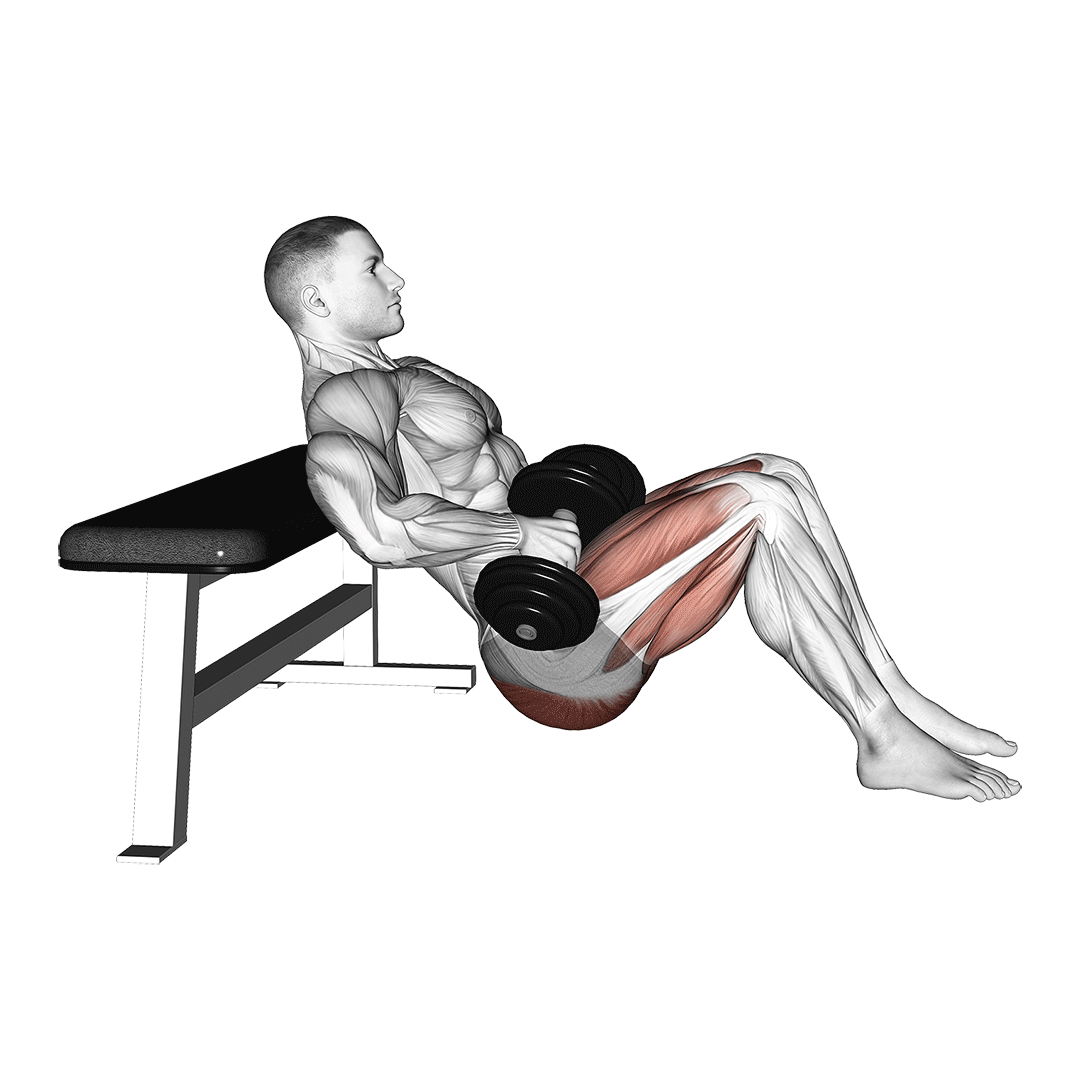
- How to Do It:
- Sit on the floor with your upper back firmly against a stable bench. Knees are bent, feet flat on the floor hip-width apart.
- Roll a loaded barbell over your hips (use a pad or folded mat for comfort!).
- Drive through your entire foot, focusing especially on your heels, lifting your hips straight up towards the ceiling.
- Lift until your body forms a straight line from your shoulders to your knees. Squeeze your glutes as hard as possible at the top.
- Hold the top position for 1-2 seconds, maintaining the squeeze.
- Slowly lower your hips back down to the starting position with control. Avoid letting the weight crash down.
- Pro Tip: As you drive up, focus on pushing your knees slightly outward against an imaginary band – this directly targets the glute medius.
2.2 Single-Leg Romanian Deadlifts (RDLs)
This beauty builds insane hamstring and glute strength while forcing your glute medius/minimus to work overtime to stabilize your pelvis on one leg. It’s functional strength at its finest.
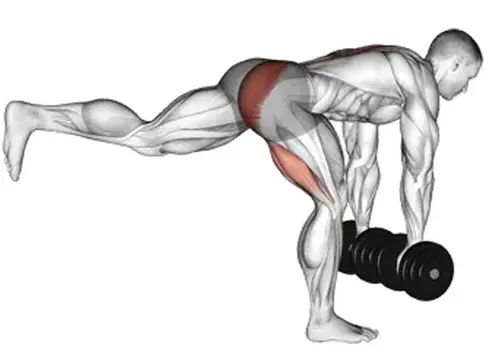
- How to Do It:
- Stand tall holding a dumbbell or kettlebell in one hand (hold it in the hand opposite your working leg). Keep your shoulders level.
- Shift your weight entirely onto one leg. Keep a slight bend in that knee – don’t lock it out.
- Hinge at your HIPS: Keeping your back naturally straight (neutral spine) and core braced, push your hips back towards the wall behind you.
- As you hinge, allow your non-working leg to extend straight back as a counterbalance. Keep it in line with your torso.
- Lower the weight towards the shin/mid-shin of your standing leg. Feel a deep stretch in your hamstring. Only go as far as you can maintain a neutral back.
- Drive powerfully through the heel of your standing foot. Focus on engaging your glute to pull your torso back upright.
- Keep your hips perfectly level throughout the entire movement – don’t let the hip of your non-standing side drop or rotate. Return to the tall starting position.
- Complete all reps on one leg before switching.
2.3 Lateral Band Walks
Looks simple? Just wait. This directly targets the glute medius like almost nothing else. Essential for building that crucial hip stability and combating knee valgus (inward knee collapse).
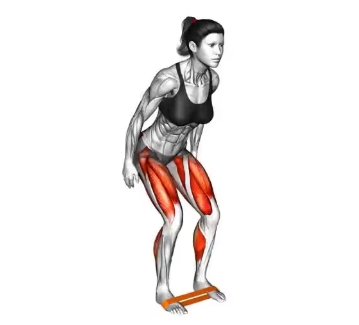
- How to Do It:
- Place a mini resistance band just above your knees (easier) or around your ankles (harder).
- Stand in a slight athletic stance: feet hip-width apart, knees softly bent, hips slightly hinged back, chest up. Maintain tension on the band.
- Take a controlled step sideways to the right with your right foot. Feel the band stretch.
- Keep tension: Slowly and smoothly bring your left foot to meet your right foot. Do NOT let your feet snap together – maintain constant band tension.
- Continue stepping sideways for the desired number of steps (e.g., 10-15 steps right). Focus on feeling the outer hip (glute medius) of the trailing leg (left leg when stepping right) working hard.
- Repeat, walking back to the left for the same number of steps. Keep the movement controlled.
2.4 Dumbbell Walking Lunges
Adding forward momentum and the walking component significantly increases demand on your hip stabilizers, especially the glute medius on the front leg as you land and push off.

- How to Do It:
- Stand tall holding dumbbells at your sides, palms facing in.
- Take a large step forward with your right leg. Land firmly on your entire right foot.
- Lower your body straight down by bending both knees. Aim to have:
- Your front right thigh roughly parallel to the floor.
- Your front knee directly above your front ankle (not pushed forward past toes).
- Your back left knee hovering just above the ground.
- Both knees bent at approximately 90-degree angles.
- Keep your torso upright throughout the lunge – avoid excessive forward lean.
- Drive powerfully through the heel of your front (right) foot. Engage your glute forcefully to propel yourself forward.
- Step your back (left) foot forward, bringing it next to your right foot, returning to the tall standing position.
- Immediately step forward with your left leg into the next lunge. Continue walking forward, alternating legs.
- Maintain control and stability with each step.
2.5 Squats (The Glute-Focused Way)
Squats are legendary upper glute exercises, but how you do them dictates glute emphasis. Wider stances and focusing on driving through the heels and “spreading the floor” actively recruit more upper glute fibers.
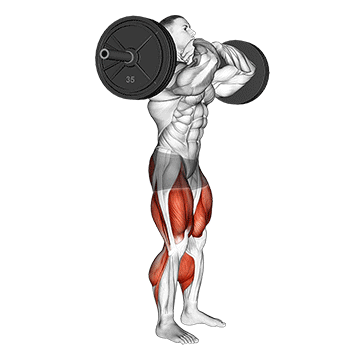
- How to Do It:
- Stand with feet significantly wider than shoulder-width (1.5x shoulder width or more). Point your toes slightly outwards (about 15-30 degrees).
- Hold a barbell on your upper back (high or low bar), a dumbbell/kettlebell at your chest (Goblet style), or no weight.
- Take a deep breath and brace your core tightly.
- Initiate the movement by sending your hips back and down as if sitting into a chair. Keep your chest up and back naturally straight (maintain a neutral spine).
- Descend as low as you comfortably can while maintaining good form (ideally thighs parallel to the floor or slightly below).
- Drive Up: Explode upwards by driving forcefully through your heels.
- “Spread the Floor”: As you drive up, actively imagine trying to push the floor apart with your feet (external rotation). This directly fires the glute medius.
- Squeeze your glutes hard at the very top of the movement.
- Control the descent on the next rep.
2.6 Step-Ups
A fantastic single-leg strength builder that mimics real-world movement (stairs!) and forces the working leg’s glutes, especially the medius, to stabilize powerfully as you step up and control the descent.
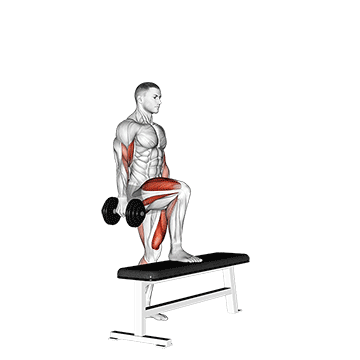
- How to Do It:
- Stand facing a sturdy bench, plyo box, or step. The height should be challenging but allow you to maintain form (start around knee height). Hold dumbbells at your sides.
- Place your entire right foot firmly on the center of the box. Ensure your heel isn’t hanging off.
- Drive solely through your right heel. Keep your torso upright. Use the power of your right glute to lift your body straight up onto the box. Do NOT push off the floor with your left foot.
- Once standing fully on the box with your body straight, bring your left foot up to lightly tap next to your right foot. Maintain balance.
- Step Down: Carefully step back down with your left foot first, lowering it to the floor. Follow slowly and controlled with your right foot. This controlled lowering phase is crucial for the glute medius.
- Focus on Stability: Throughout the entire movement, ensure the hip of your working leg (right leg) stays level. Don’t let it dip or hike. Your core should be braced.
- Complete all reps on the right leg before switching to the left leg.
- Key: The step up should be powerful and glute-driven. The step down should be slow, controlled, and emphasize stability.
3. Why Target The Upper Glutes?
- Athletic Performance: Want to sprint faster, jump higher, kick harder, or change direction on a dime? Powerful upper glutes (especially that glute medius!) are your secret weapon. They’re the engine for explosive hip extension and the bedrock for rock-solid stability during any dynamic movement. Strong upper glutes = more force, better agility, and serious power in any sport or activity. Don’t just move; dominate.
- Injury Prevention:
- Knee pain (especially that nagging runner’s knee or patellofemoral pain)
- IT band syndrome (that awful burning on the outside of your knee)
- Lower back pain (from your pelvis wobbling like a loose cannon)
- Hip issues like bursitis.
- Enhanced Posture: Ever feel like you’re constantly fighting a swayback or that anterior pelvic tilt (where your belly sticks out and butt sticks back)? Strong upper glutes are key players in maintaining a neutral pelvis. Upper glute exercises help pull your hips into proper alignment under your spine. The result? You stand taller, feel stronger through your core, and move with more grace and less strain on your lower back. Goodbye slouch, hello confident presence.
Welcome! I’m Jordan Mitchell, the dedicated editor at Leadman Fitness, where we specialize in manufacturing high-quality bumper plates, barbells, weight machines, kettlebells, and dumbbells. With a passion for fitness and a keen eye for detail, I ensure that our product information is clear, accurate, and engaging for our customers. My role involves collaborating closely with our design and production teams to highlight the innovative features and superior craftsmanship that set Leadman Fitness apart in the industry. Whether you’re a professional athlete or a fitness enthusiast, I’m here to provide you with the information you need to achieve your training goals with our top-of-the-line equipment.
